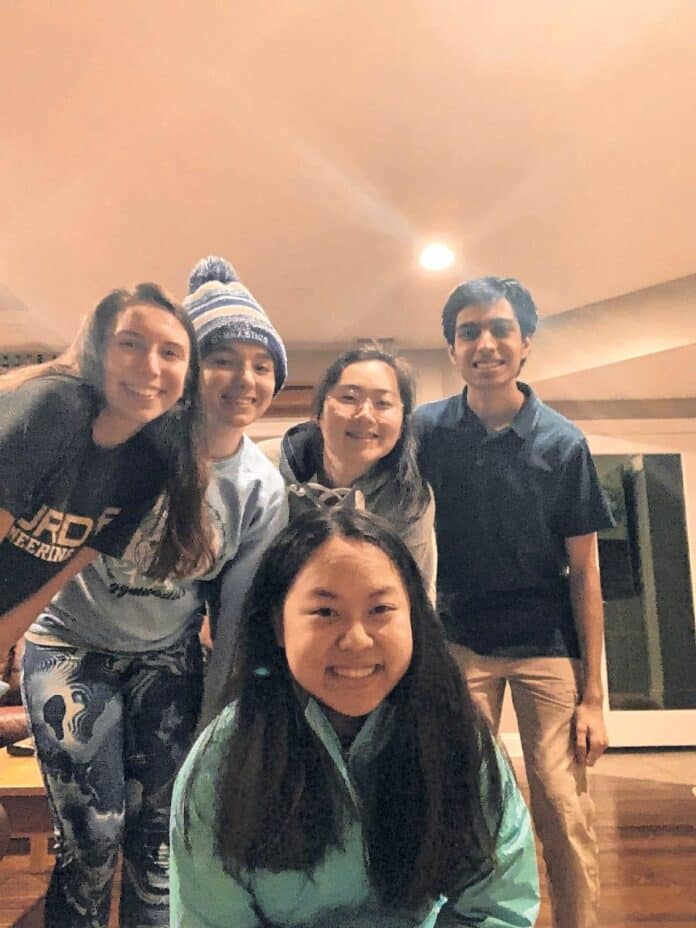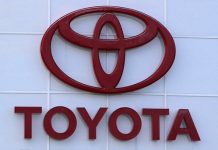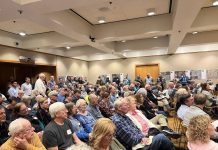
Staff Reports
A combination of math smarts and creative thinking has added up to a top spot in a major national math competition for five Columbus North High School students.
Helen Rumsey, Samantha Heathcote, Anna Kim, Erica Song and Vivek Hebbar recently advanced to the finals in MathWorks Math Modeling (M3) Challenge, the only competition of its kind which this year drew more than 3,500 11th- and 12th-grade participants from across the nation. This group is also made up of 80% female team members, which is double the overall 40% female participation in the challenge.
The team’s work is undergoing intense scrutiny by a panel of judges who will assess all the finalist papers one last time, gather commentary and come to a consensus on the final rank by April 27.
For the first time in the history of the competition, final judging will not be an all-day in-person event in New York City. COVID-19 derailed the traditional M3 Challenge final event, where the finalist teams headed to New York City in late April to compete against each other for the championship title at the offices of Jane Street, a quantitative trading firm.
Instead, all judging is taking place virtually this year.
Using mathematical modeling, the students had 14 hours in late February and early March to come up with a solution to a real-world issue: transitioning to sustainable, large-scale electric trucking in the United States.
The problem asked teams to create mathematical models to predict what percentage of semi-trucks will be electric in the next few years and decades, to determine the number and locations of charging stations along major U.S. trucking routes that are needed for an all-electric trucking industry, and to prioritize which routes should be developed with electric charging infrastructure.
Students had to make intelligent decisions about the necessary charging infrastructure and weigh the economic and environmental implications for the communities surrounding the trucking corridors.
The problem was developed with assistance from the North American Council for Freight Efficiency, which advised about some of the big, burning questions in transitioning from diesel to electric trucks, and provided data sets for teams to use.
More than 760 participating teams submitted papers detailing their recommended solutions.
Presented by Philadelphia-based Society for Industrial and Applied Mathematics and sponsored by MathWorks, M3 Challenge — now in its 15th year — spotlights applied mathematics as a powerful problem-solving tool and motivates students to consider further education and careers in math, science, and computing. Winning teams will be awarded a share of $100,000 in scholarships, with the champion team receiving $20,000.
In addition to Columbus North High School, the eight other finalist teams hail from high schools in Lincolnshire, Illinois; Memphis, Tennessee; Plymouth, Minnesota; Silver Spring, Maryland; Fullerton, California; Ann Arbor, Michigan, and two teams from Osprey, Florida.
“In addition to being very strong math students and great communicators, this team showed trust in each other and teamwork while working together on this challenge,” said Mike Spock, a teacher at North, who coached the school’s students in preparation for the 14-hour Challenge. “I always tell my students that if they participate in M3 Challenge, win or lose, they will have all the elements that someone would look for in a job interview. They get to work on a team, with a deadline, demonstrating strong communication skills, while applying their knowledge to accomplish a real task that doesn’t already have a solution. In my classroom, I have found that students really engage with math modeling.”
Song, a team member, feels her team learned a great deal through M3 Challenge and became much closer friends.
“Our team went into the competition with an eagerness to apply our math skills to real world problems and a resolve to enjoy the challenge; we definitely accomplished both,” she said. “Dividing the sections among us, each member had a distinct task to complete, while all of us offered thoughts and assistance as needed. More importantly, we did so with respect and lightheartedness, and at the end of the day, we all felt proud of each other and even closer as a team.”




